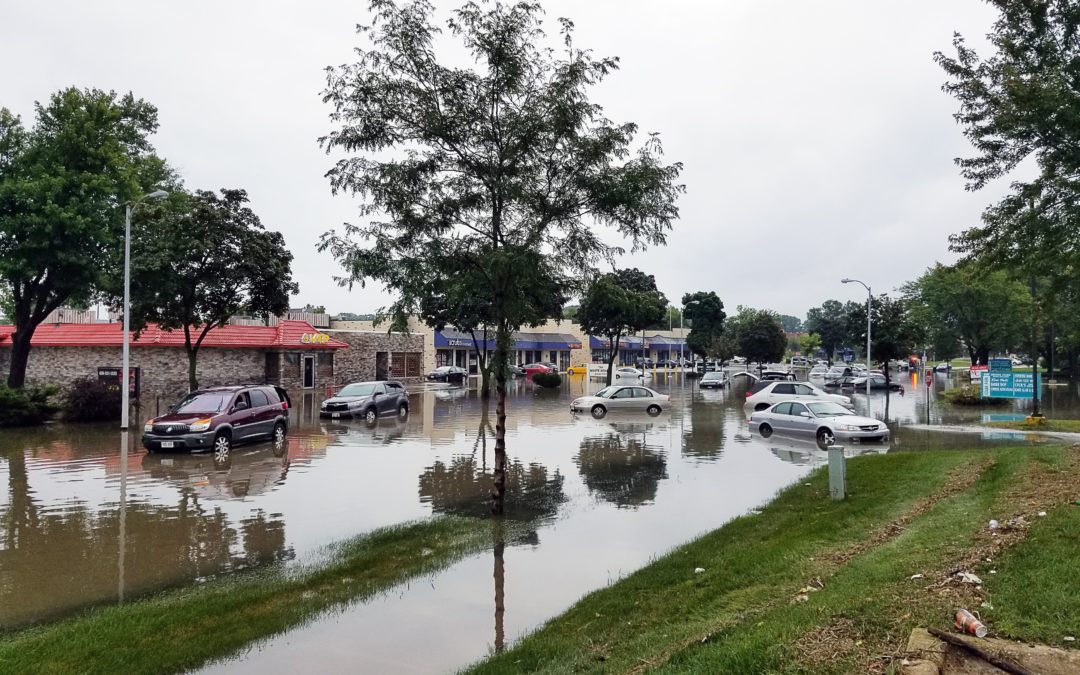Flooding is a severe problem that many homeowners overlook and underestimate. While flooding isn’t altogether common unless you live in a flood zone, the damage that’s caused by flooding can be catastrophic, which is why it’s essential that you prepare for such a possibility. In fact, it’s been estimated by FEMA that just one inch of water getting into a building can cost more than $25,000 in damages. If you’re thinking about obtaining a flood insurance policy from Webb Insurance, you should know more about what this insurance is and some of the lesser known aspects of this type of insurance.
What Is Flood Insurance?
As the name makes clear, this is a type of insurance policy that’s designed to protect your home and the possessions within from the effects of flooding. In most cases, the exact area in which you live can play a large part in how much coverage is provided as well as what the policy costs. When you’re thinking about purchasing one of these policies, there are two different types of coverage for you to consider. You can purchase just one of these coverage types or both. The first type of flooding coverage that a homeowner can purchase is building property coverage, which provides protection for the actual structure of the home as well as some of the more major appliances like the HVAC system, the electrical and plumbing systems, cabinets, and any attached bookcases.
The maximum coverage limit that you’re provided with depends on the exact policy you purchase. Many policies pay out on a replacement cost basis with primary residences and an actual cash value with vacation homes. You could also obtain personal contents coverage, which is designed to provide coverage for the items and possessions within the structure. These items can include clothing, electronics, furniture, freezers, and some valuables. If you decide to purchase coverage for the contents in your home, the compensation that you receive will be provided based on the actual cash value of the items, which means that depreciation is taken into account.
Three Things You Should Know About This Insurance
Even though you now understand the basics of what this form of insurance provides you with, there are a variety of things that you might not know about this insurance. While a policy provides your home with protection from flooding, there are several factors that you should take into account before you select a specific policy.
1. You Can Pay Less for Insurance If You’re Not In a Flood Zone
First of all, you may actually be able to pay less for insurance if your home is not situated within a flood zone, which makes this a much easier decision for you. If your home is relatively nearby a high-risk area but not quite located in one, there’s absolutely zero reason for you not to purchase a policy. You’ll be able to pay a much lower premium for this insurance than a homeowner who lives inside a high-risk area. The rate that you receive for your insurance policy depends on an array of different factors, the most important of which is whether or not your home is located in a flood zone. Other factors to keep in mind include:
- How many people occupy your building
- The year in which your home was constructed
- Where the covered contents are situated in your home layout
- The number of floors in your home
- Your deductible and the amount of contents and building coverage you receive
2. Flooding Isn’t Covered Under a Standard Homeowners Insurance Policy
It’s important to understand that no amount of flooding is covered under your homeowners insurance policy, which could create large problems with your finances if ever flooding does occur and you don’t have insurance for it. The same applies to insurance policies for condos and apartments. While a homeowners insurance policy will likely provide a small amount of protection in the event that a pipe leaks or a hole occurs in the roof that causes water damage, issues that are brought about by large amounts of rainfall or storm surges are not covered. Separate insurance for flooding is the only way that you can have peace of mind that your home and the contents within will be covered if ever flooding occurs.
3. It’s Possible That This Insurance Could Be Mandatory For You
Some homeowners are actually required to purchase this type of insurance along with a standard homeowners insurance policy depending on where they live. While this insurance can be cheaper for individuals who live outside of a high-risk area, it can also be mandatory for homeowners who live within a high-risk zone. A high-risk zone is designated on a standard flood insurance rate map with the letters A or V. If you live within one of these zones, there’s a high possibility that you will be required to obtain such a policy. You will also need to request an elevation certificate for your home. An EC displays the elevation of your home in relation to the height at which floodwaters would reach when a storm occurs. Once this EC has been created, the insurance company that’s providing you with the policy will know how much risk comes with doing so. A higher risk means that you will pay higher rates.
What to Consider When Purchasing an Insurance Policy for Flooding
There are also a number of additional things that you should know about these insurance policies before you go ahead and purchase one. For instance, while A and V are used on flood maps to designate high-risk areas, you might also want to know about the other letters so that you can better determine which zone your home is located in. If your home is situated in a location that’s marked as D, this means that there’s an undetermined risk, which usually falls just below a high risk. If the area of your home is marked with a B or shaded X, this means that your property is found in an area that’s considered to be a moderate flood hazard. Portions of the map that are designated with C or a non-shaded X come with the lowest risk and are considered to be minimal flood hazard areas.
If you’re getting ready to purchase coverage for flooding, there are a variety of things that aren’t covered in your home. For instance, any moisture or mildew damage that could have been avoided if you had taken the appropriate measures will not be covered. If your home cannot be lived in while repairs are taking place for the flooding, your living expenses while the home is being repaired will usually not be covered. In most cases, your insurance coverage won’t extend to paper valuables, currency, or precious metals that you have stored in your home. Finally, most outdoor property won’t be covered because of flooding, which includes pools, hot tubs, fences, decks, patios, and various landscape features and amenities. Aside from these exceptions, most of the possessions within your home should be covered as long as you purchase contents coverage.
Now that you have a clear understanding of what this type of insurance is and how you can benefit from it, get in touch with Webb Insurance today so that you can obtain an insurance policy that meets your every need as a homeowner.


Recent Comments